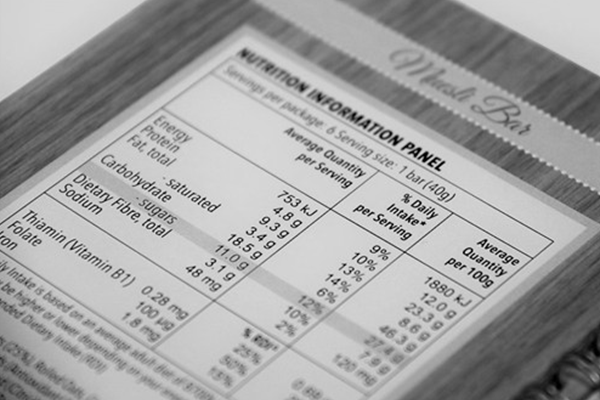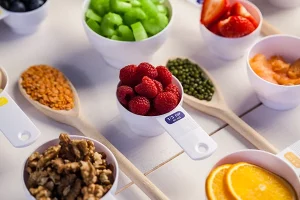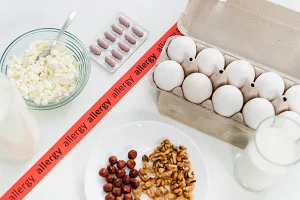The concern for increasing prevalence of chronic diseases and constant health awareness efforts are encouraging people to become more health conscious across the world. Through these efforts, it has been found that unhealthy diet plays a major role in developing chronic conditions like diabetes, cardiac disorders and certain types of cancer. Americans, in their regular working day achieve one-third of calories through consumption of packaged food items from restaurants or food stalls. Different health survey reports, mostly from western countries indicate the alarming situation of dietary impact on health. The 2011 data from Public Health Agency of Canada, reported almost two-third of adults of the Canadian population is suffering from obesity. Almost 26% of Canadian children have over weight. Since 1998 till 2011, the number of diabetic patients increased from 7% to 70% in Canada. Therefore, it has become an emergent need for people to know different types of labels and to grow correct reading process for labels present in the packed food items, as well as restaurant menus to balance the calorie intake. It is also necessary to consume the correct amount of essential nutrients to avoid diet-related chronic ailments.
Types of Food Nutritional Label
Nutrition facts label, ingredient list, and nutrition, along with health claims are present in packed food or beverage items. Mentioned below is the nutritional information that can be observed in a food label:
Nutrition facts label:
It contains the information like serving size, calories, nutrients, and percent daily values (% DV).
Ingredient list label
Contains all the ingredients present on a particular food item along with their weight. Higher weight containing ingredient is listed above and sequentially the other food ingredients are enlisted according to their weighs.
Nutrition and Health Warning/ Claims
May be available in some of the packaged food items. This type of labels provides the information about specific food ingredients like low sodium content, or health benefits of certain ingredient/s like ‘Presence of a variety of fruits and vegetables reduce the risk of certain type of cancer’.
Information on % DV assists to select packed food items. It is necessary to check % DV during grocery shopping, and even preparing homemade food.
Moreover, it is important to mention that Nutritional fact table provides 13 core nutrients information, which includes fat, saturated fat, trans fat, cholesterol, sodium, carbohydrate, fiber, sugars, protein, vitamin A, vitamin C, calcium, iron. Apart from these 13 core ingredients information, list of optional ingredients information include folate, magnesium, niacin, phosphorus, potassium, riboflavin, selenium, thiamine, vitamin B12, vitamin B6, vitamin D, vitamin E, and zinc.
Read more: So much more than just an ordinary cupcake
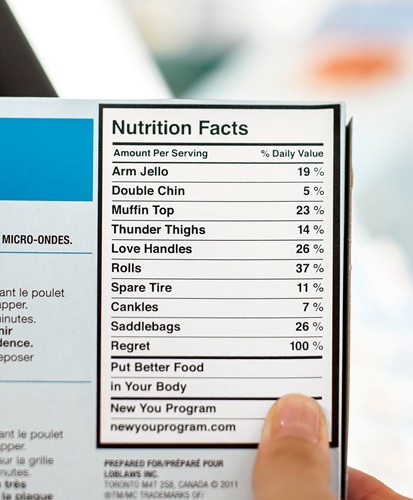
Menu Label
In early days, the restaurants and food service businesses do not use to mandatory disclose nutritional fact table. But, new regulations under U.S. Food and Drug Administration’s (FDA) requires displaying calorie information on restaurant menus and menu boards and on vending machines to help the consumer to select the food items.
Menu labeling in restaurant food become quite popular nowadays. Many localities and chain restaurants display their own menu labeling. However, there is no consistency maintained about the provided nutritional and calorie information. Apart from making it mandatory to display calorie label on menus and menu boards in chain restaurants and food service businesses and on certain vending machines, the US FDA has also provided the standard rule to maintain the nationwide consistency about the new calorie labeling. The available nutrition information should be easy to understand and directly accessible. The final US FDA rules on Menu labeling for restaurant is established on May 7, 2018. The calorie labeling is an integral part of menu labeling for the restaurants and vending machines. No symbol appears on food packaging or restaurant menus to avoid misinterpretation or misreading related issues.
Read more: Determining Serving Sizes – According to the FDA
How to correctly read menu label?
In a restaurant, one can observe that calories are mentioned prominently next to name or price of the food items enlisted in menu board. Some specific sign can also be seen displayed near the self-service foods like buffets and salad bars. The US FDA also mentioned that temporary or seasonal items, daily specials, condiments or custom orders items do not require to mention calories.
The vending machine operated food items also enlist the calories through displaying a manual sign on the poster, sticker or small placard or it can be displayed digitally or electronically; even selection button options are also there near the food items. It is to ensure that calories should be visible on the actual food packages before purchase.
The restaurants should also provide written nutrition information, such as calories from fat, total fat, saturated fat, cholesterol, trans fat, sodium, total carbohydrates, protein, dietary fiber, and sugars, on their menu items. These information can be displayed on the different restaurant platforms, such as tray liners, posters, counter cards, signs, booklets, handouts, computers, or kiosks. It is always advisable that consumers should ask nutritional information from the restaurant staff without any hesitation when they eat out.[2]
The nutritionist also suggested adding sodium information in the nutrition information, as it is found that sodium content in the restaurant food is alarmingly high. It is important to mention that dietary sodium is one of the leading cause of hypertension.
Read more: The Rise of Gen Z Consumers
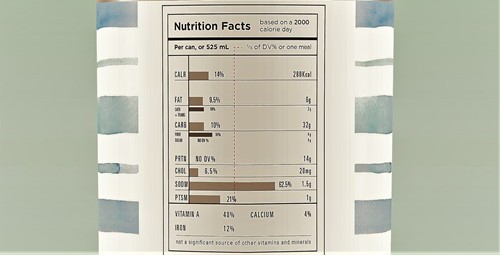
Serving Size
Serving size is available at the top of the nutritional fact label. It is imperative to mention that nutritional fact label is organized depending on the serving size. Serving size helps to calculate the nutrition and calorie intake while consuming a particular food item. For example, serving size mentioned in a bread packet indicates 1 slice of bread. Nutritional facts label is calculated depending upon 1 slice serving size of bread. Therefore, if an individual consumes 2 slices of bread, then calories and nutrients become double.[4] During purchasing or consuming packed food items, the consumer should pay an attention to the serving size, mainly the quantity of serving size packed in a food packet. This will help the consumer to decide the amount of serving is essential for obtaining the required calorie requirement.
Calorie means energy obtained from the consumed food. One of the prime reason for obesity is excess food intake. Therefore, calorie calculation before selecting and consuming food is essential for maintaining body weight. Generally, food item or menu of overall 40 calories is considered as low calories diet, whereas,100 calories food or menu is a moderate calorie diet, and 400 calories food or menu is high calories diet. Calories and the serving size is inter-related; because increase inserving portion directly increases calories consumption.
The nutrient section is further sub-divided into two sections. The nutrients like total fat content, saturated fat, trans fat, cholesterol, and sodium come under the first section. These nutrients can increase the risk of cardiac diseases, hypertension, and certain cancers. Therefore, experts recommend that individuals need to have these items as minimum as possible. Whereas the second half of the nutrient section contains all the essential nutrients, for example, dietary fibers, present in whole food products like fruits, vegetables, cereals etc. and are essential for bowel movement. Calcium is essential for bone health and preventing osteoporosis. Therefore, the consumer should select foods items in which nutrients of the second section are more in amount.
The footnote present in the nutritional fact label is a very important part, as it declares %Daily Value. In nutritional fact label,% DVs are based on a 2,000 calorie diet. The footnote is always same for every packed food and applicable for all products. Usually, the %Daily Value in the footnote is based on a 2,000 or 2,500 calorie diet. But the footnote also says that the daily requirement may vary from individual to individual depending upon their calorie requirement.
Note: * It is important to mention that some claims on %Daily Value also help to decide the suitability of the food as per the age group. For example, “high in protein” should not be recommended for infants and children under 4 years of age. However, protein intake is not a public health concern for adults and children more than 4 years of age.
** There is no established percent daily value for sugars, as no official recommendation has been declared on the total amount of sugar intake. However, it is important to check the source of sugar on the Nutrition Facts label. Natural sugar is present in fruits or milk, whereas added sugar is present in different synthetic foods or beverages. Individuals should avoid added sugar containing foods.
Read more: Co-Manufacture vs. Self-Manufacture: The choice for Food
Conclusion
With growing concerns about the food quality and health conscious population, Nutrition labels are becoming very important. Governments all over world are also demanding for enhanced transparency in disclosing the ingredients and it’s health impacts. MenuSano is a one such tool which helps restaurants to be more transparent with their customers and as well with governments. MenuSano is widely used by restaurants and health conscious individuals. Try MenuSano for free and explore how you can make better food choices for your customer, your family, and yourself.

